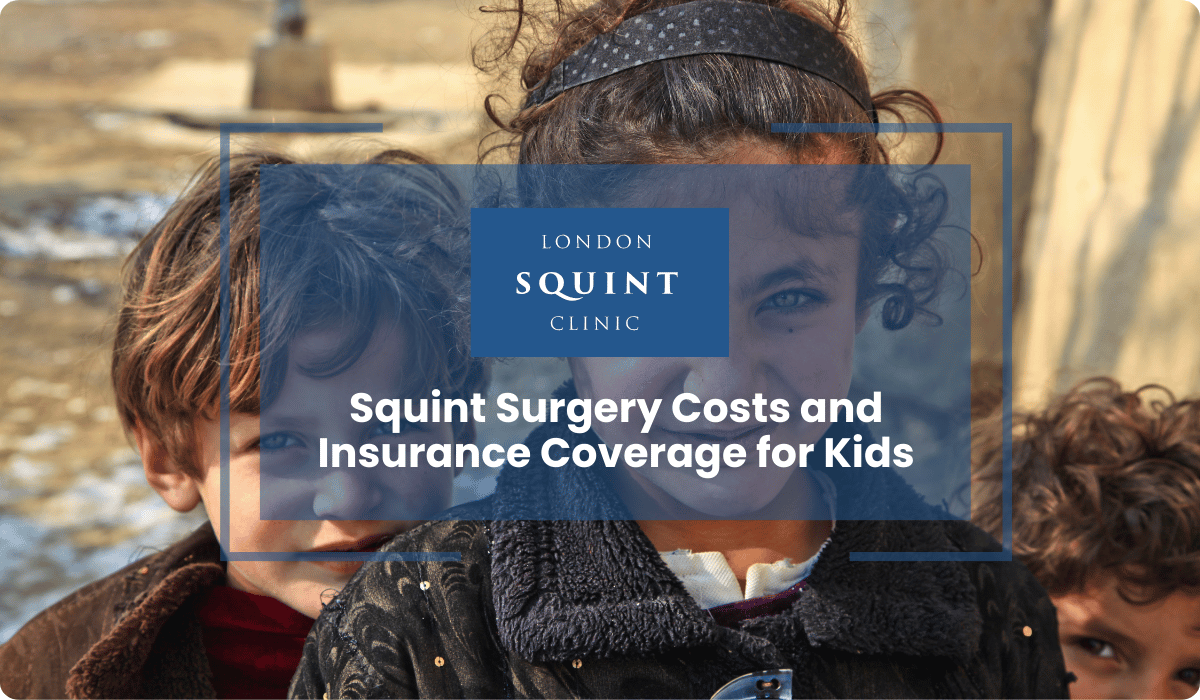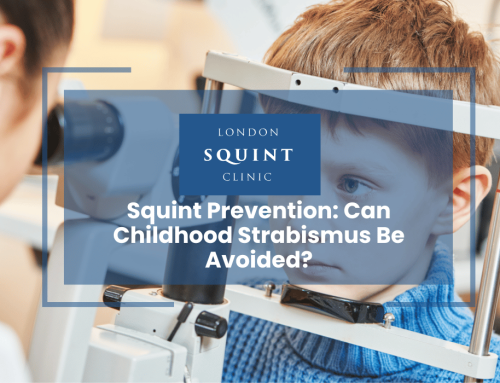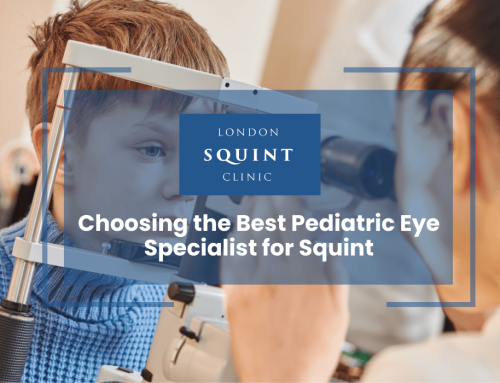Squint Surgery Costs and Insurance Coverage for Kids
Essential Information for Parents: Navigating Squint Surgery Costs
- NHS provides free squint surgery for eligible children, with waiting times typically between 12-24 weeks, while private treatment costs range from £2,500-£5,000 per eye
- Private health insurance can significantly reduce out-of-pocket expenses, but coverage depends on policy details and pre-existing condition clauses
- Multiple payment options exist for private treatment, including interest-free plans spreading costs over 6-24 months and medical loans with competitive rates
- Parents should budget for potential post-surgery expenses, including follow-up consultations, vision therapy, and possible revision surgery (needed in 20-30% of cases)
- The complexity of the squint, surgeon’s expertise, geographical location, and facility type all significantly influence the final cost of treatment
Table of Contents
- Understanding Pediatric Squint Surgery: Types and Procedures
- How Much Does Squint Surgery Cost for Children in the UK?
- NHS Coverage for Children’s Squint Surgery: Eligibility Criteria
- Private Treatment Options: Costs and Considerations
- Insurance Coverage for Pediatric Strabismus Procedures
- Factors That Influence Squint Surgery Pricing
- Financial Assistance and Payment Plans for Eye Surgery
- Post-Surgery Costs: Follow-Up Care and Potential Revisions
Understanding Pediatric Squint Surgery: Types and Procedures
Squint surgery, medically known as strabismus surgery, is a corrective procedure designed to realign misaligned eyes in children. This misalignment, where one eye looks straight ahead while the other turns inward, outward, upward, or downward, affects approximately 2-4% of children in the UK. Early intervention is crucial as untreated squints can lead to amblyopia (lazy eye) and permanent vision impairment.
The primary types of pediatric squint surgeries include:
- Recession procedure: The eye muscle is detached and reattached further back on the eye to weaken its pull
- Resection procedure: A portion of the muscle is removed to strengthen its action
- Adjustable suture surgery: Allows fine-tuning of eye alignment after the initial procedure
- Botulinum toxin injection: A less invasive option that temporarily weakens overactive muscles
Most children’s squint surgeries are performed under general anaesthesia and typically take 30-60 minutes. The surgeon makes a small incision in the conjunctiva (the clear membrane covering the white of the eye) to access and adjust the eye muscles. Modern techniques mean there are no visible stitches, and most children can go home the same day.
Before considering surgical intervention, ophthalmologists often try conservative treatments such as glasses, eye patches, or vision therapy. Surgery becomes an option when these methods prove insufficient for correcting the alignment issue.
How Much Does Squint Surgery Cost for Children in the UK?
The cost of pediatric strabismus surgery in the UK varies significantly depending on whether treatment is sought through the NHS or privately. For private patients, squint surgery for children typically ranges from £2,500 to £5,000 per eye. This price variation reflects differences in surgical complexity, the surgeon’s expertise, geographical location, and the specific facility where the procedure is performed.
A comprehensive breakdown of private squint surgery costs often includes:
- Initial consultation fees: £200-£350
- Pre-operative assessments: £150-£300
- Surgeon’s fees: £1,500-£3,000
- Anaesthetist fees: £500-£800
- Hospital facility charges: £800-£1,500
- Post-operative care: Typically included for 4-6 weeks
Many private eye clinics offer package pricing that encompasses all these elements, providing clarity for parents planning for their child’s treatment. It’s worth noting that complex cases requiring adjustment of multiple eye muscles or revision surgery may incur higher costs.
For accurate pricing specific to your child’s condition, a consultation with a pediatric ophthalmologist is essential, as they can assess the complexity of the squint and provide a detailed treatment plan with associated costs. Some clinics also offer free initial screenings to determine if a full consultation is necessary.
NHS Coverage for Children’s Squint Surgery: Eligibility Criteria
The National Health Service (NHS) provides comprehensive coverage for children’s squint surgery when it is deemed medically necessary. This service is available free of charge to eligible patients, making it the primary treatment pathway for most families in the UK. Understanding the eligibility criteria and referral process is essential for parents navigating this healthcare journey.
To qualify for NHS-funded squint surgery, children typically need to meet the following criteria:
- A confirmed diagnosis of strabismus by an NHS ophthalmologist
- Evidence that non-surgical interventions (glasses, patching, exercises) have been insufficient
- The squint poses a risk to visual development or function
- The child is experiencing symptoms such as double vision or visual confusion
- There are significant psychosocial impacts affecting the child’s wellbeing
The referral pathway usually begins with a GP or optometrist who refers the child to the local NHS ophthalmology department. Following assessment, the child may be placed on a waiting list for surgery if deemed appropriate. Current NHS waiting times for pediatric squint surgery vary by region, typically ranging from 12 to 24 weeks, though these timeframes can extend in some areas.
It’s important to note that while the NHS prioritises cases based on medical need, some families opt for private treatment to avoid waiting lists or to access specific surgeons. The insurance coverage for children’s eye care can sometimes bridge the gap between NHS and private treatment options.
Private Treatment Options: Costs and Considerations
Opting for private squint surgery for children provides families with greater flexibility in scheduling, choice of surgeon, and potentially reduced waiting times. Private treatment pathways offer comprehensive care packages that typically include pre-operative assessments, the surgical procedure, and post-operative follow-up care.
When considering private treatment options, parents should be aware of several key factors:
- Specialist selection: Private care allows families to choose a pediatric ophthalmologist with specific expertise in children’s strabismus surgery
- Hospital facilities: Leading private hospitals often feature dedicated pediatric units with child-friendly environments
- Consultation timeframes: Private consultations typically offer more extended appointment times, allowing for detailed discussions about treatment options
- Surgical techniques: Some private clinics may offer advanced surgical approaches not widely available on the NHS
- Continuity of care: Patients typically see the same surgeon throughout their treatment journey
Cost structures vary between private providers, with prestigious London clinics generally commanding premium rates compared to regional facilities. Many private hospitals offer fixed-price packages for squint surgery ranging from £3,000 to £5,500, depending on complexity. These packages typically include the surgeon’s fee, hospital charges, anaesthesia, and initial follow-up appointments.
Some private clinics specialise exclusively in pediatric ophthalmology, offering environments specifically designed for children’s comfort and psychological wellbeing. These specialised facilities may charge premium rates but provide expertise focused entirely on children’s eye conditions and developmental visual needs.
Insurance Coverage for Pediatric Strabismus Procedures
Private health insurance can significantly reduce the financial burden of pediatric strabismus surgery for families choosing private treatment. Coverage for children’s eye alignment surgery varies considerably between insurance providers and policy types, making it essential for parents to thoroughly understand their specific plan details.
Most comprehensive family health insurance policies in the UK cover medically necessary squint surgery for children, but with important considerations:
- Pre-existing conditions: If the squint was diagnosed before taking out the policy, it may be excluded from coverage
- Waiting periods: Some policies impose waiting periods of 3-6 months before claims for planned surgeries can be made
- Network restrictions: Insurers often have preferred provider networks, and choosing surgeons outside these networks may reduce coverage
- Pre-authorisation requirements: Most insurers require pre-approval for surgical procedures
- Excess payments: Policy excess amounts typically range from £100 to £500 per claim
Leading UK health insurers such as Bupa, AXA PPP, Aviva, and Vitality typically cover strabismus surgery when deemed medically necessary. Coverage often includes consultations, diagnostic tests, the surgical procedure, and post-operative care. However, cosmetic aspects of squint correction may not be covered if there is no functional vision impairment.
To maximise insurance benefits, parents should:
- Contact their insurer before seeking specialist consultation
- Obtain written confirmation of coverage
- Request a breakdown of covered services and potential out-of-pocket expenses
- Verify if their chosen specialist is recognised by their insurer
Factors That Influence Squint Surgery Pricing
The cost of pediatric strabismus surgery can vary significantly based on numerous factors. Understanding these variables helps parents anticipate potential expenses and make informed decisions about their child’s treatment pathway.
Key factors influencing squint surgery pricing include:
- Complexity of the squint: Simple horizontal muscle adjustments typically cost less than complex cases involving multiple muscles or vertical misalignments
- Surgical technique: Advanced techniques such as adjustable sutures may incur additional costs
- Surgeon’s expertise: Highly specialised pediatric ophthalmologists with extensive experience may command higher fees
- Geographical location: London-based clinics generally charge 20-40% more than regional facilities
- Hospital rating: Premium hospitals with specialised pediatric facilities typically charge more than standard private hospitals
- Anaesthesia requirements: Longer procedures requiring extended anaesthesia time increase costs
- Diagnostic testing: Comprehensive pre-operative assessments including specialised imaging may add to overall expenses
Additionally, revision surgeries typically cost more than initial procedures due to increased complexity and surgical time. Approximately 20-30% of children may require a second procedure to achieve optimal alignment, which parents should factor into their financial planning.
The age of the child can also influence pricing, as very young patients may require additional resources for safe anaesthesia administration and post-operative monitoring. Conversely, some facilities offer reduced rates for simple procedures in older, more cooperative children that can be performed with less extensive resources.
Financial Assistance and Payment Plans for Eye Surgery
For families considering private squint treatment for their children but concerned about costs, various financial assistance options and payment plans can make surgery more accessible. Many private clinics and hospitals recognise the financial challenges families face and have developed flexible payment solutions.
Common financial assistance options include:
- Interest-free payment plans: Many clinics offer 0% interest plans allowing costs to be spread over 6-24 months
- Medical loans: Specialised healthcare finance companies provide loans specifically for medical procedures, often with competitive interest rates
- Sliding scale fees: Some clinics adjust fees based on household income
- Charitable support: Organisations like the Royal Society for Blind Children occasionally provide grants for vision-saving procedures
- Hospital-specific financial aid: Some private hospitals maintain charitable funds to assist families with limited financial resources
When exploring payment plans, parents should inquire about:
- Any required deposits (typically 10-20% of the total cost)
- Credit checks and eligibility requirements
- Monthly payment amounts and duration
- Any hidden fees or charges
- Early repayment options
Additionally, some employers offer healthcare cash plans or employee assistance programmes that can contribute towards children’s eye surgery costs. These benefits often reimburse a percentage of medical expenses up to a specified annual limit.
For families unable to access private care, working closely with NHS providers remains the primary option. In some cases, NHS consultants may also practice privately, allowing families to benefit from their expertise while remaining within the NHS system for the surgical procedure itself.
Post-Surgery Costs: Follow-Up Care and Potential Revisions
When budgeting for a child’s squint surgery, parents must consider not only the immediate surgical expenses but also the potential costs associated with post-operative care and possible revision procedures. These additional expenses can significantly impact the overall financial commitment required.
Typical post-surgery costs may include:
- Follow-up consultations: Most private packages include 1-2 post-operative appointments, but additional visits (£150-£250 each) may be necessary
- Prescription medications: Anti-inflammatory and antibiotic eye drops (£10-£30)
- Vision therapy: Some children benefit from specialised exercises to optimise binocular vision after alignment correction (£80-£120 per session)
- Updated spectacles: Changes in eye alignment often necessitate new prescriptions (£100-£300)
- Travel expenses: Regular visits to specialist centres may involve significant travel costs
Parents should be aware that approximately 20-30% of children require revision surgery to achieve optimal alignment. Revision procedures typically cost 70-100% of the original surgery price, though some clinics offer reduced rates for secondary procedures. When selecting a surgeon, it’s advisable to inquire about their policy regarding revision surgery costs.
Long-term monitoring is essential following squint surgery, with regular check-ups recommended for at least 1-2 years post-operation. While initial follow-ups are usually included in surgical packages, extended monitoring may incur additional costs. Some private clinics offer annual review packages specifically designed for post-strabismus surgery patients.
For children with complex cases or associated conditions such as amblyopia, ongoing treatment costs may extend for several years. Families should discuss the potential long-term financial commitment with their ophthalmologist during initial consultations to ensure comprehensive financial planning.
Frequently Asked Questions
Is squint surgery for children available on the NHS?
Yes, squint surgery for children is available on the NHS when it’s deemed medically necessary. To qualify, children need a confirmed strabismus diagnosis from an NHS ophthalmologist, evidence that non-surgical treatments have been insufficient, and the condition must pose a risk to visual development. The referral process typically starts with a GP or optometrist who refers the child to the local NHS ophthalmology department. Waiting times generally range from 12 to 24 weeks, depending on the region.
How much does private squint surgery cost for children in the UK?
Private squint surgery for children in the UK typically costs between £2,500 and £5,000 per eye. This price includes initial consultation fees (£200-£350), pre-operative assessments (£150-£300), surgeon’s fees (£1,500-£3,000), anaesthetist fees (£500-£800), and hospital charges (£800-£1,500). Many clinics offer package pricing that covers all these elements plus 4-6 weeks of post-operative care. Complex cases requiring adjustment of multiple eye muscles may cost more.
What age is best for children to have squint surgery?
There is no single “best age” for squint surgery as the timing depends on the specific type of squint, its severity, and how it affects the child’s vision development. Many ophthalmologists recommend surgery between ages 2-4 for congenital squints that don’t respond to non-surgical treatments. Early intervention is often preferred to prevent amblyopia (lazy eye) and promote normal binocular vision development. However, surgery can be successfully performed at any age when medically indicated, even in infancy or adolescence.
Does private health insurance cover children’s squint surgery?
Most comprehensive family health insurance policies in the UK cover medically necessary squint surgery for children. However, coverage depends on specific policy details, including whether the condition was pre-existing, waiting periods (typically 3-6 months), network restrictions, and excess payments (£100-£500). Major insurers like Bupa, AXA PPP, Aviva, and Vitality generally cover strabismus surgery when it’s not purely cosmetic. Parents should contact their insurer before seeking specialist consultation to confirm coverage details.
How successful is squint surgery in children?
Squint surgery in children has a success rate of approximately 70-80% for achieving satisfactory eye alignment with a single operation. Success rates vary depending on the type and severity of the squint, with horizontal deviations generally having better outcomes than vertical ones. About 20-30% of children require a second procedure to achieve optimal alignment. Beyond cosmetic improvement, functional success (development of binocular vision) is more likely when surgery is performed early and combined with appropriate non-surgical treatments like glasses and patching.
What payment plans are available for private squint surgery?
Many private clinics offer financial assistance options for squint surgery, including interest-free payment plans allowing costs to be spread over 6-24 months, medical loans with competitive interest rates, and sliding scale fees based on household income. When exploring payment plans, parents should inquire about required deposits (typically 10-20% of total cost), credit checks, monthly payment amounts, any hidden fees, and early repayment options. Some hospitals also maintain charitable funds to assist families with limited financial resources.
What additional costs should parents budget for after squint surgery?
Post-surgery costs may include additional follow-up consultations beyond those included in the surgical package (£150-£250 each), prescription medications (£10-£30), vision therapy sessions (£80-£120 per session), updated spectacles (£100-£300), and travel expenses for specialist appointments. Parents should also budget for potential revision surgery, which occurs in 20-30% of cases and typically costs 70-100% of the original procedure. Long-term monitoring is essential for at least 1-2 years post-operation, which may incur additional expenses beyond the initial surgical package.
Find out if you are suitable for Double Vision Treatment
Not everyone is eligible for double vision surgery.
Find out if you could benefit from this life-changing surgery by taking the quick self-suitability quiz below:
Our most popular procedures

Hello, I’m Nadeem Ali
I’m one of the few eye surgeons in the world with 100% focus on Squint and Double Vision Surgery.
I have 24 years of eye surgery experience, and worked for 13 years as a Consultant at London’s renowned Moorfields Eye Hospital.
In 2023, I left the NHS to focus fully on treating patients from across the world at the London Squint Clinic. You can read more about me here.
There’s lots of information on the website about: squint surgery, double vision surgery and our pricing.
The most rewarding part of my job is hearing patients tell me how squint or double vision surgery has changed their lives. You can hear these stories here.
Mr Nadeem Ali
MA MB BChir MRCOphth FRCSEd(Ophth)





